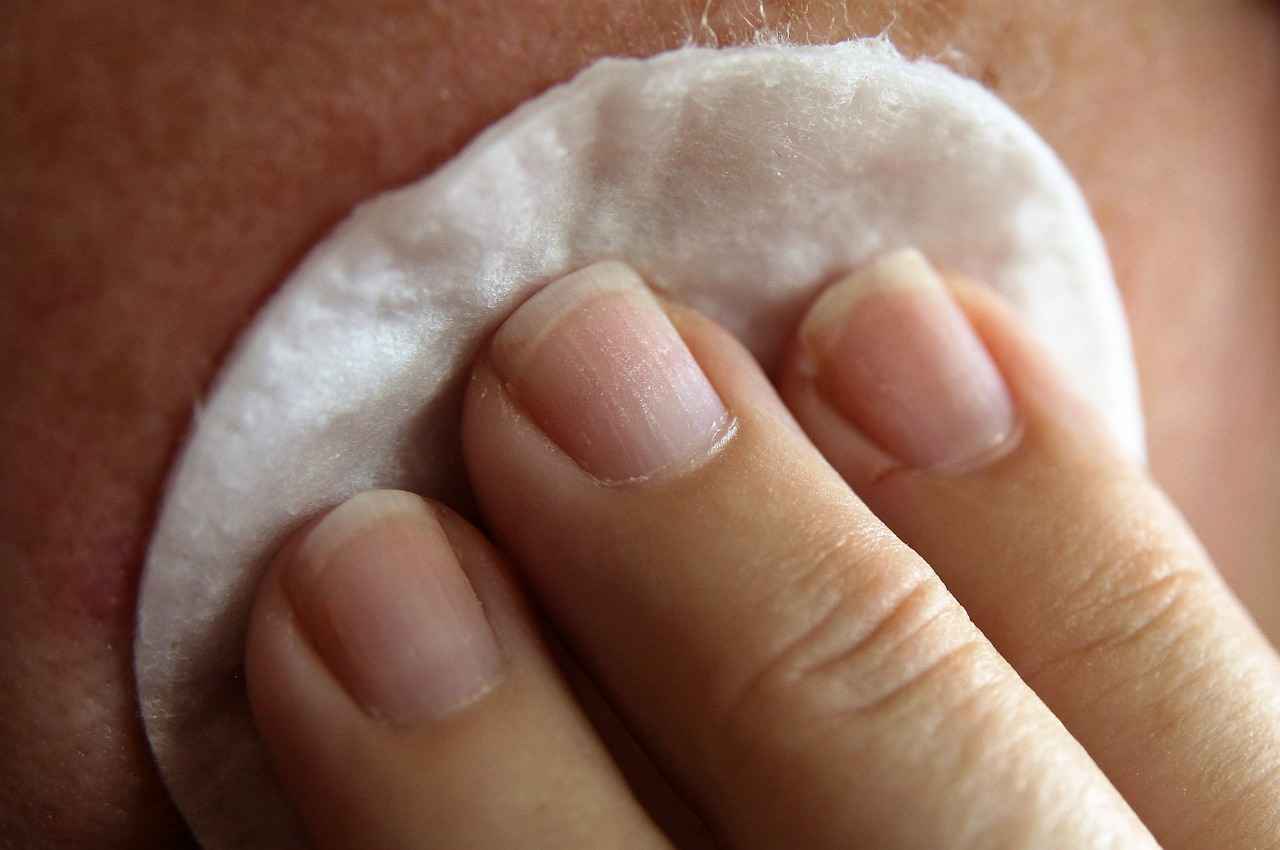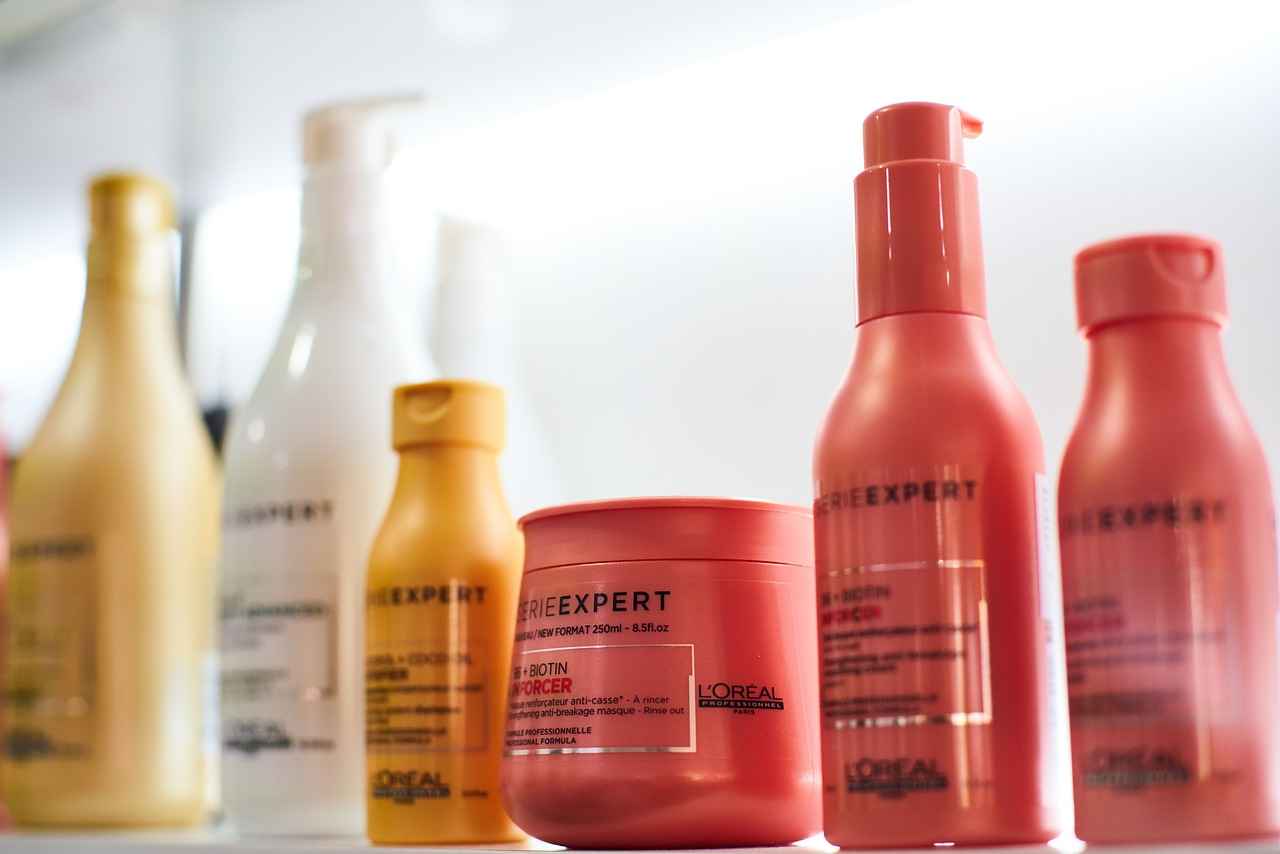When it comes to maintaining the elegance of your slip dress, dry cleaning may not be the best option. While it is a popular choice for many garments, this method can pose risks to the delicate fabrics that slip dresses are often made from. In this article, we will explore the reasons why dry cleaning might not be ideal, alternative cleaning methods, and essential care tips to keep your slip dress looking its best.
Dry cleaning is a process that uses chemical solvents instead of water to clean clothes. It is designed to effectively remove stains while minimizing the risk of damage to fabrics. However, the solvents used can be harsh, and they may not be suitable for sensitive materials like silk or satin that are commonly found in slip dresses.
Slip dresses are typically crafted from luxurious fabrics such as silk, satin, or chiffon, which are known for their soft texture and beautiful drape. These materials can be easily damaged by traditional cleaning methods, leading to issues such as color fading and shrinkage. Understanding the properties of these fabrics is crucial for effective care.
Many slip dress owners report challenges when opting for dry cleaning. Some of the most common problems include:
- Color fading: The solvents used can strip the fabric of its vibrant hues.
- Fabric shrinkage: The cleaning process can cause delicate fabrics to shrink, altering the fit of the dress.
- Loss of shape: Dry cleaning can sometimes distort the dress’s silhouette, affecting its overall appearance.
Fortunately, there are safer alternatives to dry cleaning that can help maintain the integrity of your slip dress. Some effective at-home cleaning methods include:
- Hand washing: This gentle method allows you to control the cleaning process and avoid harsh chemicals.
- Spot cleaning: For minor stains, using a damp cloth and mild detergent can be effective without the need for full washing.
Hand washing is a preferred method for many slip dress owners. Here’s a step-by-step guide to ensure safe and effective cleaning:
1. Fill a basin with cool water and add a gentle detergent.2. Submerge the slip dress and gently agitate the water.3. Let it soak for about 5-10 minutes.4. Rinse thoroughly with cool water until all detergent is removed.5. Lay flat on a clean towel to dry, reshaping as necessary.
Selecting a suitable detergent is crucial for preserving your slip dress. Look for products labeled as gentle or delicate to avoid harsh chemicals that can damage the fabric.
Water temperature plays a significant role in the cleaning process. Always use cool or lukewarm water to prevent damage, as hot water can cause delicate fabrics to shrink or lose their shape.
While dry cleaning may not be suitable, professional fabric care services can offer safer alternatives. Consulting with fabric care specialists ensures that your slip dress receives the attention it deserves, using methods tailored to its unique fabric.
Proper storage is essential for maintaining your slip dress’s quality. Store it in a cool, dry place away from direct sunlight, and consider using a breathable garment bag to protect it from dust and pests.
Ironing can be tricky with delicate fabrics. Always use a low heat setting and place a thin cloth between the iron and the dress to avoid direct contact, which can scorch the fabric.
Knowing when to consult a professional is important for maintaining your slip dress. If you encounter stubborn stains or significant damage, it’s advisable to seek expert help to restore your dress to its original beauty.

What Is Dry Cleaning and How Does It Work?
Understanding the dry cleaning process is crucial for anyone who owns delicate garments, particularly slip dresses. These elegant pieces are often made from sensitive materials that require special care. In this section, we will delve into the dry cleaning process, highlighting its steps and implications for fragile fabrics.
What is Dry Cleaning? Dry cleaning is a cleaning method that uses chemical solvents instead of water to clean textiles. This process is designed for fabrics that may be damaged by traditional washing methods. The primary solvent used in dry cleaning is perchloroethylene (often referred to as “perc”), although alternatives like hydrocarbon and silicone-based solvents are also gaining popularity.
How Does the Dry Cleaning Process Work? The dry cleaning process can be broken down into several key steps:
- Inspection: Each garment is inspected for stains, damage, and fabric type. This step is crucial for determining the appropriate cleaning method.
- Pre-Treatment: Stains are treated with specialized solvents to help lift them during the cleaning process. This is particularly important for slip dresses, as certain stains can be more stubborn.
- Cleaning: The garment is placed in a machine that uses the chosen solvent. The machine gently agitates the fabric to remove dirt and grime without the harsh effects of water.
- Drying: After cleaning, the garment is dried in the same machine. The solvent is evaporated, leaving the fabric clean and fresh. This step is crucial for slip dresses, as excessive moisture can lead to fabric distortion.
- Finishing: Finally, the garment is pressed or steamed to remove wrinkles and restore its shape. This step is particularly important for maintaining the elegant silhouette of a slip dress.
While dry cleaning can effectively clean garments, it is essential to note that the chemicals involved can be harsh, especially on delicate fabrics like silk or satin. The process may lead to issues such as color fading, shrinkage, and even loss of shape. Therefore, understanding how dry cleaning works allows slip dress owners to make informed decisions about their garment care.
In conclusion, while dry cleaning offers a convenient solution for cleaning delicate fabrics, it is not without its risks. By being aware of the process and its potential effects, you can take better care of your slip dress and explore alternative cleaning methods that may be gentler on the fabric.

Why Are Slip Dresses Delicate?
Slip dresses are a timeless addition to any wardrobe, celebrated for their elegance and versatility. However, their delicate nature often raises concerns regarding their care and maintenance. Understanding why slip dresses are delicate is crucial for preserving their beauty and longevity. This section delves into the properties of the fabrics commonly used in slip dresses, such as silk and satin, and highlights the challenges they present during traditional cleaning methods.
Slip dresses are often crafted from luxurious materials like silk and satin, which are known for their soft texture and appealing drape. However, these fabrics possess unique properties that make them susceptible to damage. Below are some key factors contributing to the delicacy of slip dresses:
- Fiber Structure: Silk fibers are naturally fine and smooth, which gives them their luxurious feel. However, this also means they can be easily snagged or torn when exposed to rough surfaces or improper handling.
- Moisture Sensitivity: Satin, often made from silk or polyester, can absorb moisture, which may lead to water stains or distortions in the fabric if not dried properly. This sensitivity makes traditional washing methods risky.
- Color Retention: The dyes used in silk and satin can be prone to fading, especially when exposed to harsh chemicals or high temperatures during cleaning. This can result in a loss of vibrancy in your beloved slip dress.
- Shape and Structure: Slip dresses often feature delicate designs and construction. The combination of lightweight fabrics and intricate detailing means that they can lose their shape or structure if not cared for correctly.
Given these characteristics, traditional cleaning methods, such as dry cleaning, may not always be the best approach. The solvents used in dry cleaning can be harsh, potentially leading to color fading and fabric damage. Additionally, the agitation involved in the dry cleaning process can cause the fabric to lose its original form.
Understanding the delicate nature of slip dresses not only helps in making informed decisions about their care but also emphasizes the importance of adopting gentler cleaning methods. For instance, hand washing with mild detergents can be a safer alternative, allowing you to maintain the fabric’s integrity while ensuring it remains clean and fresh.
In summary, the delicate properties of slip dresses, stemming from their luxurious materials, require careful consideration when it comes to cleaning and maintenance. By recognizing these factors, you can take the necessary steps to preserve the beauty and longevity of your slip dress.

Common Issues with Dry Cleaning Slip Dresses
For many slip dress owners, the allure of dry cleaning can quickly turn into a source of frustration. While dry cleaning is often seen as a convenient option for maintaining delicate garments, it poses several challenges that can compromise the integrity of your beloved slip dress. In this section, we will explore some of the most common issues associated with dry cleaning slip dresses, including color fading, fabric shrinkage, and loss of shape.
- Color Fading: One of the most significant concerns when dry cleaning slip dresses is the potential for color fading. Many slip dresses are made from vibrant fabrics that can lose their luster when exposed to harsh chemicals used in dry cleaning. This fading can be particularly noticeable in darker colors, where the richness of the hue is crucial to the dress’s overall appeal.
- Fabric Shrinkage: Another issue that slip dress owners may encounter is fabric shrinkage. The solvents used in dry cleaning can sometimes cause sensitive materials like silk and satin to contract. This not only alters the fit of the dress but can also lead to an uneven appearance, making it less flattering when worn.
- Loss of Shape: Slip dresses are designed to have a specific silhouette, and dry cleaning can disrupt this shape. The process often involves tumbling and agitation, which can lead to distortion in the fabric. As a result, the dress may not hang as intended, affecting the overall look and feel.
In addition to these primary concerns, there are other factors that slip dress owners should consider when contemplating dry cleaning. For instance, the presence of embellishments, such as lace or beading, can also be compromised during the dry cleaning process. These delicate details may not withstand the chemicals or mechanical action, leading to damage that is often irreversible.
Furthermore, the cost associated with dry cleaning can add up, particularly if the dress requires frequent cleaning. Many slip dress owners find that the expense does not justify the results, especially when considering the potential for damage.
Given these challenges, it’s essential for slip dress owners to weigh their options carefully. While dry cleaning may seem like the easiest solution, it may not always be the best choice for preserving the beauty and longevity of your slip dress. Exploring alternative cleaning methods, such as hand washing or seeking professional fabric care, can often yield better results without the associated risks.

Are There Safer Alternatives to Dry Cleaning?
When it comes to caring for your beloved slip dress, exploring alternatives to dry cleaning can be a game-changer. While dry cleaning is often seen as the go-to method for maintaining delicate fabrics, it may not always be the best option, especially for sensitive materials like silk or satin. In this section, we will delve into effective at-home cleaning methods that are gentle on your slip dress and help maintain its integrity over time.
Dry cleaning utilizes harsh chemicals that can strip away the natural fibers of your slip dress. This can lead to color fading, fabric shrinkage, and even a loss of shape. By opting for at-home cleaning methods, you can avoid these risks while ensuring your dress remains vibrant and well-maintained.
- Hand Washing: One of the safest methods to clean your slip dress is by hand washing it. Use lukewarm water and a gentle detergent specifically designed for delicate fabrics. This method allows you to control the cleaning process and minimizes the risk of damage.
- Spot Cleaning: For minor stains, consider spot cleaning instead of a full wash. Use a soft cloth dampened with water and a mild detergent to gently dab the stained area. This targeted approach helps preserve the overall quality of the fabric.
- Steam Cleaning: If your slip dress needs freshening up, steam cleaning can be an excellent alternative. Hang your dress in the bathroom while taking a hot shower, allowing the steam to relax wrinkles and odors without direct contact with water.
- Drying Techniques: When it comes to drying, avoid wringing out your dress, as this can distort its shape. Instead, lay it flat on a clean towel to absorb excess water and then reshape it before air drying.
When selecting a detergent for your slip dress, look for gentle, pH-balanced options that are free of harsh chemicals and fragrances. Products specifically designed for delicate fabrics will help maintain the dress’s integrity while effectively removing dirt and stains.
Using the right water temperature is crucial when cleaning your slip dress. Cool to lukewarm water is ideal, as hot water can cause shrinkage and damage to delicate fibers. Always check the care label for specific recommendations.
To keep your slip dress looking its best between washes, consider the following tips:
- Store Properly: Hang your slip dress on a padded hanger to maintain its shape. Avoid folding it, as creases can form and be difficult to remove.
- Avoid Direct Sunlight: Store your dress away from direct sunlight to prevent color fading.
- Use a Garment Bag: If you need to store your dress for an extended period, consider placing it in a breathable garment bag to protect it from dust and environmental factors.
By adopting these at-home cleaning methods and care tips, you can confidently maintain your slip dress without the need for dry cleaning. These alternatives not only help preserve the fabric but also allow you to enjoy your dress for many seasons to come.

How to Hand Wash a Slip Dress Properly?
Hand washing your slip dress is a gentle and effective method to maintain its beauty and longevity. This guide will walk you through the essential steps to ensure your delicate fabric is cleaned without damage.
When it comes to caring for your slip dress, hand washing is often the safest option. Here’s a detailed step-by-step guide:
- Gather Your Supplies: Before you start, make sure you have the following items:
- Gentle detergent specifically designed for delicate fabrics
- A clean basin or sink
- Cold water
- A soft towel
- Prepare the Water: Fill your basin or sink with cold water. Hot water can cause the fabric to shrink or lose its shape.
- Add Detergent: Use a small amount of your gentle detergent and mix it into the water until it is fully dissolved. It’s important to choose a detergent that is free from harsh chemicals to protect your slip dress.
- Submerge the Dress: Gently place your slip dress into the water. Avoid scrubbing or twisting the fabric, as this can lead to damage.
- Soak: Allow the dress to soak for about 10-15 minutes. This will help loosen any dirt or oils without agitating the fibers.
- Rinse Carefully: After soaking, drain the soapy water and refill the basin with clean, cold water. Gently swish the dress in the water to rinse out the detergent. Repeat this step until the water runs clear.
- Remove Excess Water: To remove excess water, lay the dress flat on a clean towel. Roll the towel with the dress inside to absorb moisture. Avoid wringing out the fabric, as this can distort its shape.
- Drying: Hang the dress on a padded hanger or lay it flat on a drying rack, away from direct sunlight. This helps to prevent fading and maintain the dress’s shape.
By following these steps, you can effectively hand wash your slip dress while preserving its delicate fabric. Remember, gentleness is key when handling such a fragile garment.
In addition to hand washing, it’s important to consider how often you clean your slip dress. Frequent washing can lead to wear, so try to limit cleaning to when it’s truly necessary. Spot cleaning can also be an effective way to deal with minor stains without a full wash.
With proper care, your slip dress can remain a stunning addition to your wardrobe for years to come. Always remember to check the care label for any specific instructions related to your dress’s fabric.
Choosing the Right Detergent
Selecting the right detergent for your slip dress is essential in preserving its beauty and longevity. The delicate nature of fabrics like silk and satin requires a careful approach to cleaning, ensuring that the detergent used is both gentle and effective. In this section, we will explore the various types of detergents suitable for delicate fabrics and why they matter.
When it comes to cleaning slip dresses, not all detergents are created equal. A suitable detergent for delicate fabrics should possess the following characteristics:
- pH Neutral: Detergents that are pH neutral help maintain the fabric’s natural balance and prevent damage.
- Enzyme-Free: Enzymes can be harsh on delicate fibers, so choosing a detergent without enzymes is advisable.
- Color Safe: Look for detergents that are specifically labeled as color-safe to prevent fading.
- Biodegradable: Eco-friendly options are not only better for the environment but also gentler on fabrics.
Several types of detergents are available that cater specifically to delicate fabrics:
- Liquid Detergents: These are often easier to rinse out and less likely to leave residue compared to powders.
- Wool Wash: Designed for delicate wool fabrics, these washes are also suitable for silk and satin.
- Gentle Baby Detergents: Formulated for sensitive skin, these detergents are typically free from harsh chemicals.
- Specialty Detergents: Brands that focus on delicate fabrics often provide specific formulations that cater to the needs of silk and satin.
When selecting a detergent, consider the following:
1. **Read Labels:** Always check the product label for compatibility with delicate fabrics.2. **Test First:** If trying a new detergent, conduct a patch test on a hidden area of the fabric.3. **Follow Instructions:** Adhere to the manufacturer's guidelines for the best results.
Using regular detergents can lead to a myriad of problems for your slip dress, including:
- Fabric Damage: Harsh chemicals can break down fibers, leading to tears and wear.
- Color Fading: Non-color-safe detergents can strip away the vibrancy of your dress.
- Residue Build-Up: Powders may not dissolve completely, leaving behind a residue that can dull the fabric.
In summary, choosing the right detergent is a crucial step in maintaining the integrity of your slip dress. By opting for a gentle, pH-neutral detergent specially formulated for delicate fabrics, you can ensure that your dress remains in pristine condition for years to come.
Water Temperature Considerations
When it comes to caring for your slip dress, understanding the importance of water temperature during the hand washing process is crucial. Slip dresses, often crafted from delicate fabrics such as silk, satin, or chiffon, require special attention to avoid damage. This section delves into the ideal temperature settings for hand washing slip dresses, ensuring they remain in pristine condition.
The temperature of the water you use can significantly impact the fabric of your slip dress. High temperatures can lead to:
- Color Fading: Hot water can cause dyes to bleed, resulting in a loss of vibrancy.
- Fabric Shrinkage: Many delicate fabrics are prone to shrinking when exposed to heat.
- Loss of Shape: Excessive heat can alter the structure of the dress, leading to a misshapen silhouette.
For most slip dresses, the ideal water temperature for hand washing is cool to lukewarm, typically around 30°C to 40°C (86°F to 104°F). This range is gentle enough to protect the fabric while still allowing for effective cleaning.
To ensure your slip dress is cleaned properly without damage, follow these simple steps:
- Fill a Basin: Use cool to lukewarm water in a clean basin or sink.
- Add Detergent: Choose a mild detergent specifically formulated for delicate fabrics.
- Submerge the Dress: Gently place your slip dress in the water, allowing it to soak for about 5 to 10 minutes.
- Gently Agitate: Swirl the water gently to help lift dirt and stains, avoiding any harsh scrubbing.
- Rinse Thoroughly: After washing, rinse the dress with cool water until all detergent is removed.
- Dry Carefully: Lay the dress flat on a clean towel to absorb excess water, then reshape it before air drying away from direct sunlight.
Here are a few more tips to keep in mind:
- Always Check Labels: Always refer to the care label on your slip dress for specific washing instructions.
- Test for Colorfastness: If unsure about color bleeding, test a small area with water before washing the entire dress.
- Avoid Soaking for Too Long: Prolonged exposure to water, even at safe temperatures, can weaken delicate fabrics.
By understanding the significance of water temperature in the cleaning process, you can effectively maintain the beauty and integrity of your slip dress. Hand washing at the right temperature not only preserves the fabric but also extends the life of your cherished garment.

What Are the Benefits of Professional Fabric Care?
When it comes to maintaining the beauty and longevity of your slip dress, professional fabric care services offer a range of advantages that can be particularly beneficial compared to traditional dry cleaning. This section explores the numerous benefits of consulting with fabric care specialists, ensuring your delicate garments receive the utmost attention and care.
One of the primary benefits of professional fabric care is the expertise that specialists bring to the table. These professionals are well-versed in the properties of various fabrics, including silk, satin, and lace. They understand the specific requirements for cleaning and maintaining each material, which can prevent damage that might occur during conventional cleaning methods.
Unlike standard dry cleaning methods that often use harsh chemicals, professional fabric care services can offer tailored cleaning solutions. Specialists assess the fabric and its condition, allowing them to choose the most suitable cleaning products and techniques. This customization ensures that your slip dress is treated with the appropriate level of care, preserving its color, shape, and texture.
Stains on delicate fabrics can be particularly challenging to remove without causing further damage. Professional fabric care specialists are equipped with advanced stain removal techniques that are gentle yet effective. They can identify the type of stain and apply the best method to treat it, significantly reducing the risk of permanent damage to your garment.
Over time, regular wear and cleaning can lead to a decline in the quality of your slip dress. Professional fabric care services emphasize the preservation of fabric integrity. By using gentle cleaning methods and specialized treatments, they can help maintain the original luster and feel of your dress, ensuring it remains a cherished part of your wardrobe for years to come.
Maintaining a busy lifestyle can make it challenging to find time for garment care. By opting for professional fabric care, you save valuable time and effort. These services often offer pickup and delivery options, allowing you to focus on your daily activities while ensuring your slip dress is in expert hands.
As sustainability becomes increasingly important, many professional fabric care services are adopting eco-friendly practices. They utilize biodegradable detergents and environmentally safe cleaning methods, providing a guilt-free option for those concerned about their environmental footprint while caring for delicate fabrics.
While the initial cost of professional fabric care may seem higher than traditional dry cleaning, it can be a cost-effective investment in the long run. By properly maintaining your slip dress, you reduce the likelihood of damage that could necessitate expensive repairs or replacements. This proactive approach to garment care can ultimately save you money.
In summary, the benefits of consulting with professional fabric care specialists are numerous and significant. From their expert knowledge and customized solutions to advanced stain removal techniques and eco-friendly practices, these services provide a comprehensive approach to maintaining the quality of your slip dress. By choosing professional care, you ensure that your delicate garments receive the attention they deserve, allowing them to retain their beauty and elegance for years to come.

How to Store Your Slip Dress Properly?
Storing your slip dress properly is crucial for preserving its beauty and longevity. Slip dresses, often made from delicate fabrics like silk or satin, require special care to prevent damage. Here are some essential tips on how to store your slip dress effectively.
- Choose the Right Hanger: Opt for padded or wooden hangers to avoid creating shoulder bumps. Avoid using wire hangers as they can distort the shape of your dress.
- Use a Garment Bag: When storing your slip dress, consider using a breathable garment bag. This protects the fabric from dust and potential snags while allowing air circulation.
- Avoid Direct Sunlight: Store your slip dress in a cool, dark place away from direct sunlight. Sunlight can cause colors to fade and weaken the fibers over time.
- Keep It Dry: Ensure your dress is completely dry before storing it. Moisture can lead to mildew and unpleasant odors, damaging the fabric.
- Fold with Care: If you prefer to fold your slip dress instead of hanging it, do so carefully. Place acid-free tissue paper between folds to prevent creases and preserve the fabric’s integrity.
- Check Regularly: Periodically inspect your stored slip dress for any signs of damage, such as pests or discoloration. Early detection can help prevent further issues.
Additionally, if your slip dress has intricate details, such as lace or beading, consider wrapping it in a soft cotton cloth before placing it in the garment bag. This extra layer of protection can help prevent snagging and maintain the dress’s delicate features.
When it comes to long-term storage, consider using a climate-controlled environment. Extreme temperatures and humidity can adversely affect delicate fabrics. A consistent temperature and humidity level will help maintain your slip dress’s quality.
By following these simple yet effective storage tips, you can ensure that your slip dress remains in excellent condition, ready to wear for any occasion. Proper care and storage are key to enjoying your beautiful slip dress for years to come.

Can You Iron a Slip Dress?
Ironing a slip dress can indeed be a challenging task, especially when dealing with delicate fabrics such as silk or satin. These materials require special care to avoid damage, making it essential to understand the best practices for ironing your slip dress without causing harm. This guide will equip you with the necessary tips and techniques to ensure your slip dress maintains its beauty and integrity.
Before you begin ironing, it’s crucial to know the type of fabric your slip dress is made from. Fabrics like silk are prone to burning or shining when exposed to high heat. Always check the care label for specific instructions regarding ironing. If it states “do not iron,” consider alternatives like steaming.
- Clean Your Iron: Ensure your iron is clean and free from any residue that could transfer to your dress.
- Use a Pressing Cloth: Place a thin cotton cloth over the area you intend to iron to provide a protective barrier.
- Set the Right Temperature: Adjust your iron to the lowest heat setting suitable for delicate fabrics.
When you’re ready to iron, follow these best practices:
- Iron Inside Out: Turn your slip dress inside out to prevent direct heat from damaging the outer fabric.
- Use Steam Wisely: If your iron has a steam function, use it sparingly. Steam can help remove wrinkles without direct contact.
- Gentle Pressure: Apply minimal pressure while ironing. Let the weight of the iron do the work to avoid crushing the fabric.
If you’re hesitant to use an iron, consider these alternatives:
- Steaming: A garment steamer is a gentle way to remove wrinkles without the risk of damage.
- Hanging in the Bathroom: Hang your dress in the bathroom while you take a hot shower. The steam will help relax the fabric.
- Using a Hair Dryer: On a low setting, a hair dryer can help smooth out minor wrinkles when held at a safe distance.
If your slip dress is heavily wrinkled or made from an especially sensitive fabric, it may be best to consult a professional cleaner. They have the expertise and tools to handle delicate materials without causing damage.
In conclusion, ironing a slip dress requires careful attention to detail and a gentle approach. By understanding the fabric and employing the right techniques, you can keep your slip dress looking pristine and ready for any occasion.

When to Seek Professional Help?
Maintaining the elegance of your slip dress is essential, and knowing when to seek professional help can make all the difference. Slip dresses, often made from delicate materials like silk or satin, require special care to avoid damage. In this section, we will explore various scenarios where consulting a professional is not just advisable but necessary.
- Stubborn Stains: If your slip dress has encountered tough stains that you cannot remove with gentle hand washing, it’s time to consult a professional. Stains from wine, oils, or makeup can become permanent if not treated correctly.
- Fabric Damage: Noticeable wear and tear, such as fraying seams or fabric pulls, should prompt a visit to a fabric care specialist. Attempting to repair these issues at home can lead to further damage.
- Color Fading: If your slip dress has lost its vibrancy, a professional can help restore its original color through specialized cleaning and dyeing techniques that are safe for delicate fabrics.
- Loss of Shape: Over time, slip dresses can lose their form, especially around the bust and waist. A professional can help reshape your dress and ensure it fits you perfectly again.
- Complex Embellishments: If your slip dress features intricate detailing such as lace, beads, or embroidery, it’s advisable to seek expert help. These embellishments require special care that only professionals can provide.
While many slip dress owners prefer to handle cleaning and maintenance themselves, there are instances when DIY methods simply won’t suffice. For example, if you’ve attempted to hand wash your dress but still notice lingering odors or stains, it’s best to consult a professional. They have access to advanced cleaning solutions and techniques that can rejuvenate your garment.
Choosing to consult a fabric care specialist can offer numerous benefits that go beyond simple cleaning. Professionals can provide:
- Expert Advice: They can guide you on how to care for your slip dress, helping you avoid common pitfalls.
- Specialized Equipment: Professionals use equipment and cleaning agents specifically designed for delicate fabrics, ensuring your dress is treated with the utmost care.
- Restoration Services: Many fabric care specialists offer services to restore the original beauty of your slip dress, including color restoration and fabric repair.
In summary, knowing when to seek professional help for your slip dress is crucial for maintaining its beauty and longevity. By recognizing the signs that indicate a need for expert care, you can ensure your garment remains a staple in your wardrobe for years to come. Don’t hesitate to reach out to a professional when faced with stubborn stains, fabric damage, or the need for restoration.
Frequently Asked Questions
- What is dry cleaning, and how does it work?
Dry cleaning is a cleaning process that uses chemical solvents instead of water to clean delicate fabrics. It works by removing dirt and stains without the risk of damaging sensitive materials like silk or satin, which are common in slip dresses.
- Why are slip dresses considered delicate?
Slip dresses are often made from sensitive fabrics that can easily be damaged. Materials like silk and satin are prone to fading, shrinkage, and loss of shape, making them challenging to clean with traditional methods.
- What are the common issues with dry cleaning slip dresses?
Many slip dress owners experience issues like color fading, fabric shrinkage, and distortion of the dress’s shape when opting for dry cleaning. These problems can significantly affect the overall appearance and longevity of the garment.
- Are there safer alternatives to dry cleaning?
Yes! Hand washing is a gentle alternative that many slip dress owners prefer. It allows for more control over the cleaning process and helps preserve the integrity of the fabric.
- How should I store my slip dress to keep it in good condition?
To maintain your slip dress’s quality, store it in a cool, dry place, preferably hanging it on a padded hanger to avoid creases. Avoid direct sunlight to prevent color fading.
- When should I seek professional help for my slip dress?
If your slip dress has stubborn stains, or if you’re unsure about the cleaning process, consulting a professional fabric care specialist is a wise choice. They can provide tailored solutions without risking damage to your dress.


